As a brick-making machine owner, I understand the importance of high-quality construction materials. Concrete pipes are a vital part of many infrastructure projects, but not all pipes are created equal.
Business owners face the challenge of navigating through various manufacturing processes, standards, and innovations in order to choose the best concrete pipes for their projects. This guide aims to simplify that process by providing a comprehensive overview of concrete pipe manufacturing, so you can make an informed decision for your business.
Read on to learn more about this essential construction component.
1. The Concrete Pipe Manufacturing Process
Concrete pipe manufacturing involves a series of intricate processes to create a durable and long-lasting product. Let’s dive into the different stages and techniques used to manufacture concrete pipes.
Raw Materials
The primary raw materials used in concrete pipe manufacturing are cement, aggregate (sand, gravel, or crushed stone), and water. These materials are carefully selected to ensure the final product meets the required strength and durability standards. As a business owner, I have always emphasized the importance of using high-quality raw materials to produce the best concrete pipes.
The table below provides an overview of the essential raw materials involved in the manufacturing of concrete pipes, highlighting their significance in achieving strength and durability. Explore the key raw materials, including cement, aggregate, and water, which play a critical role in producing high-quality concrete pipes with optimal structural integrity.
| Raw Materials |
Description |
| Cement |
A key component in concrete production, cement acts as a binder that holds the other materials together. It is typically made from limestone, clay, shells, and silica sand through a heating process. |
| Aggregate |
Aggregates, such as sand, gravel, or crushed stone, provide bulk and stability to the concrete mixture. They make up the majority of the mixture and help to reinforce the structure of the concrete pipes. |
| Water |
Water is necessary for the hydration process of cement, allowing it to harden and bind with the aggregates. The right amount of water is crucial to achieve the desired consistency and strength in the concrete. |
The Dry-Cast Process
The dry-cast process involves creating a low-moisture concrete mix and placing it in a machine that forms the pipe. According to NPCA, a dry-cast mixture has just enough water to initiate cement hydration within the range of 0.30 to 0.38 without the use of admixtures.
This process is known for its high production speed and is ideal for producing non-reinforced concrete pipes. The dry-cast process has been efficient and cost-effective for manufacturing small-diameter pipes.
The Wet-Cast Process
The wet-cast process uses a higher moisture content in the concrete mix, which is poured into a mold and vibrated to remove air bubbles. This method allows for the production of larger, more complex pipe shapes and reinforced concrete pipes. The wet-cast process provides a higher degree of control over the final product’s quality and strength.
2. Testing and Quality Control in Concrete Pipe Manufacturing
Ensuring the quality and reliability of concrete pipes is crucial for their intended applications. Let’s explore the different testing methods and quality control processes used in the industry.
Compression Testing
Compression testing is conducted to determine the load-carrying capacity of the concrete pipes. This is an essential step to ensure the pipes can withstand the pressure and weight of the intended application. In my experience, consistent compression testing has been vital in maintaining the high-quality standards of our concrete pipes, especially when using a fly ash brick machine.
Hydrostatic Testing
Hydrostatic testing involves filling the concrete pipe with water and pressurizing it to check for leaks and defects. According to Science Direct, this test is used to evaluate the structural integrity of pipelines or other pressure containing infrastructure, especially in applications such as water supply systems and sewer systems. Hydrostatic testing is a critical step in maintaining customer trust and satisfaction.
Non-Destructive Testing
Non-destructive testing (NDT) methods, such as ultrasonic testing and ground-penetrating radar, are employed to inspect the concrete pipes for defects without causing damage. These tests are crucial in identifying any potential issues before the pipes are installed. Believe me, incorporating NDT methods in the quality control process can significantly reduce the occurrence of post-installation problems.
Quality Control Processes
Quality control processes in concrete pipe manufacturing involve regular inspections, calibration of equipment, and adherence to industry standards. These processes help maintain the highest quality and performance of concrete pipes. As a business owner, you can see the direct benefits of stringent quality control measures in the success of your clients’ projects.
3. Types of Concrete Pipes
There are various types of concrete pipes available in the market, each with its own unique properties and applications. Let’s explore the three main types of concrete pipes.
Reinforced Concrete Pipes (RCP)
Reinforced concrete pipes (RCP) are strengthened with steel reinforcement, which provides added strength and durability. These pipes are commonly used in large-scale projects and applications with high load-bearing requirements. RCPs have proven to be a reliable choice for clients looking for long-lasting solutions.
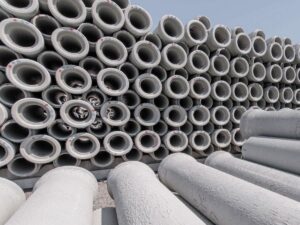
Non-Reinforced Concrete Pipes
Non-reinforced concrete pipes do not contain steel reinforcement and are typically used in applications with lower load-bearing requirements. These pipes are more cost-effective than RCPs and can be produced more quickly through the dry-cast process. For instance, non-reinforced concrete pipes are suitable for smaller projects where budget constraints are a concern.
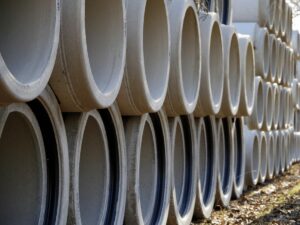
Prestressed Concrete Pipes
Prestressed concrete pipes are manufactured by applying tension to the steel reinforcement before the concrete is poured. This technique enhances the strength and durability of the pipe, making it ideal for high-pressure applications such as water supply systems. From my experience, prestressed concrete pipes have been a popular choice for clients seeking a high-performance solution.
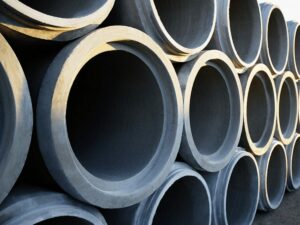
4. Applications of Concrete Pipes
Concrete pipes are versatile and can be used in various applications. Let’s explore some of the common uses of concrete pipes in the construction industry.
Sewer Systems
Concrete pipes are widely used in sewer systems due to their durability and resistance to corrosion. Their strength and ability to withstand high loads make them an excellent choice for both new installations and replacements. Many successful sewer system projects utilizing concrete pipes.
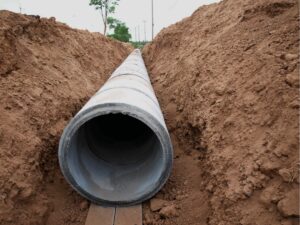
Stormwater Drainage
Stormwater drainage systems rely on concrete pipes for their high load-bearing capacity and resistance to erosion. These pipes are essential for managing water runoff in urban areas and preventing flooding. Concrete pipes have been a reliable solution for stormwater drainage projects.
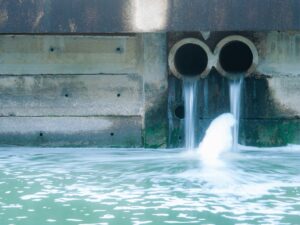
Irrigation Systems
Concrete pipes are commonly used in irrigation systems, where their durability and resistance to corrosion make them a suitable choice for transporting water over long distances. I have witnessed the benefits of using concrete pipes in agricultural projects, ensuring the efficient distribution of water.
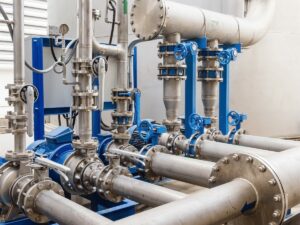
Culverts
Culverts are structures used to allow water to flow under a road, railway, or embankment. Concrete pipes are often utilized in culvert construction for their strength and ability to withstand the weight of the overlying structure. Concrete pipes provide long-lasting and cost-effective solutions for culvert projects.
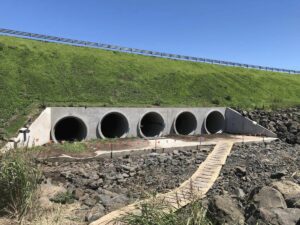
Water Supply Systems
Concrete pipes are frequently used in water supply systems for their ability to handle high pressure and resist corrosion. Prestressed concrete pipes, in particular, are well-suited for these applications due to their enhanced strength. Concrete pipes are a reliable option for water supply system projects.
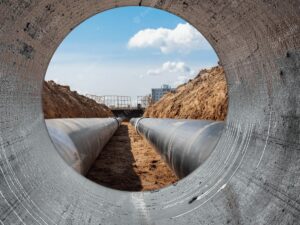
5. Benefits of Using Concrete Pipes
Concrete pipes offer several advantages, making them a popular choice for various construction applications. Let’s discuss some of the key benefits of using concrete pipes.
Durability and Strength
Concrete pipes are known for their durability and strength, capable of withstanding heavy loads and resisting corrosion. This makes them an ideal choice for long-lasting infrastructure projects. For example, investing in durable concrete pipes has led to reduced maintenance costs and increased customer satisfaction.
Environmental Sustainability
Concrete pipes are environmentally sustainable, as they can be made from locally sourced materials and have a long service life. Additionally, concrete is recyclable, which further contributes to its sustainability. As a business owner, I am proud to offer products that promote environmental sustainability.
Cost-Effectiveness
Concrete pipes are cost-effective due to their low maintenance requirements and long service life. They can also be produced relatively quickly, reducing project delays and associated costs. The cost-effectiveness of concrete pipes makes them an attractive option for budget-conscious clients.
6. Challenges in Concrete Pipe Manufacturing
Although concrete pipes offer numerous benefits, there are challenges in the manufacturing process that must be addressed. Let’s explore some of these challenges and their potential impacts on the industry.
Quality Control
Maintaining consistent quality control in concrete pipe manufacturing can be challenging due to factors such as variations in raw materials and equipment calibration. It’s crucial to implement strict quality control processes to ensure the final product meets the required standards. As a business owner, I recognize the importance of investing in quality control measures to maintain customer trust and satisfaction.
Environmental Concerns
Concrete pipe manufacturing involves the use of natural resources and energy, which can lead to environmental concerns such as resource depletion and carbon emissions. Manufacturers must strive to adopt sustainable practices and minimize their environmental impact. Adopting environmentally friendly practices has not only benefited the environment but has also improved my company’s reputation.
7. Standards and Regulations in Concrete Pipe Manufacturing
To ensure quality and safety, concrete pipe manufacturing is subject to various industry standards and regulations. Let’s discuss some of the most important standards and regulations in the field.
ASTM Standards
The American Society for Testing and Materials (ASTM) has established several standards related to concrete pipe manufacturing, which cover aspects such as materials, design, and testing procedures. Adhering to ASTM standards ensures that concrete pipes meet the required performance and safety criteria.
AASHTO Standards
The American Association of State Highway and Transportation Officials (AASHTO) also provides guidelines for concrete pipe manufacturing, specifically addressing the requirements for pipes used in transportation infrastructure projects. Following AASHTO standards, Tabrick can guarantee that our concrete pipes are suitable for their intended applications in highway and transportation projects.
Industry-specific Regulations
Depending on the region and specific industry, concrete pipe manufacturers may be subject to additional regulations and guidelines. I know you will agree with me that it’s essential for manufacturers to stay informed about these regulations to ensure compliance and maintain a strong reputation in the industry.
8. Innovations in Concrete Pipe Manufacturing
The concrete pipe manufacturing industry is continuously evolving, with new technologies and materials being developed to improve efficiency and performance. Let’s explore some of the latest innovations in the field.
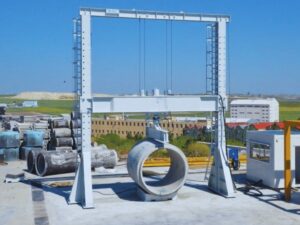
Advancements in Machinery
Technological advancements in machinery have led to more efficient and precise manufacturing processes, resulting in higher-quality concrete pipes. For instance, as a business owner, investing in cutting-edge machinery can be essential in staying competitive and meeting customer demands.
New Concrete Mixes
Innovative concrete mixes, such as self-compacting concrete and high-performance concrete, offer improved performance characteristics, including increased strength and durability. These new mixes have the potential to revolutionize the concrete pipe manufacturing industry.
Self-Compacting Concrete
Self-compacting concrete is a unique type of concrete that can flow and compact under its own weight, eliminating the need for vibration during the manufacturing process. This innovation has the potential to significantly reduce production time and costs while maintaining high-quality standards.
Fiber-Reinforced Concrete
By adding fibers to the concrete mix, the resulting composite material exhibits greater resistance to cracking and increased toughness. Amazing right? This makes fiber-reinforced concrete an ideal solution for building structures that require high durability, such as bridges, tunnels, and high-rise buildings.
Lightweight Concrete
Lightweight concrete is created by using lightweight aggregates or foaming agents, resulting in a concrete mix with lower density and weight. This innovation can reduce transportation and handling costs, making it an attractive option for certain applications.
9. 4 Tips for Choosing the Right Concrete Pipe for Your Business
Choosing the right concrete pipe for your business can be a daunting task with numerous factors to consider. Here are four practical tips to help you make an informed decision.
#1 Understand Your Project Requirements
Before you select a type of concrete pipe, it’s crucial to understand your project’s specific needs. This includes factors such as the load-bearing capacity, pipe size, and expected service life. Having a clear understanding of these requirements can guide your selection process.
#2 Evaluate the Quality of the Pipes
Not all concrete pipes are created equal. Quality can significantly vary between manufacturers, so it’s essential to evaluate the quality of the pipes before making a purchase. This can include checking the manufacturer’s quality control processes, certification, and compliance with industry standards.
#3 Consider the Pipe’s Durability
Concrete pipes are renowned for their durability, but different manufacturing processes and materials can affect the level of durability. Consider the pipe’s resistance to wear and tear, weather conditions, and corrosive environments, particularly if the pipe will be used in demanding applications.
#4 Consult with the Manufacturer
Lastly, don’t hesitate to consult with the manufacturer or supplier. They have in-depth knowledge and experience and can provide valuable advice to help you choose the right concrete pipe for your business. At Tabrick, we always strive to provide our clients with comprehensive guidance based on their specific needs, whether it’s related to interlock brick machines or other construction equipment.
Dive Deeper Into Our Resources
Looking for more diverse product options? Browse through our handpicked selections:
Still haven’t found what you’re looking for? Don’t hesitate to contact us. We’re available around the clock to assist you.
10. Conclusion
Concrete pipes are an essential component in various construction applications, and understanding the intricacies of their manufacturing processes, testing methods, and applications can help you make the best decisions for your business. I have seen firsthand the importance of using high-quality concrete pipes and the impact they have on the success of infrastructure projects.
If you’re looking to invest in advanced brick making machinery, consider Tabrick, a leading brick making machine manufacturer that offers high-quality, durable, and innovative products. Contact us for more information on our offerings and how they can benefit your business.









